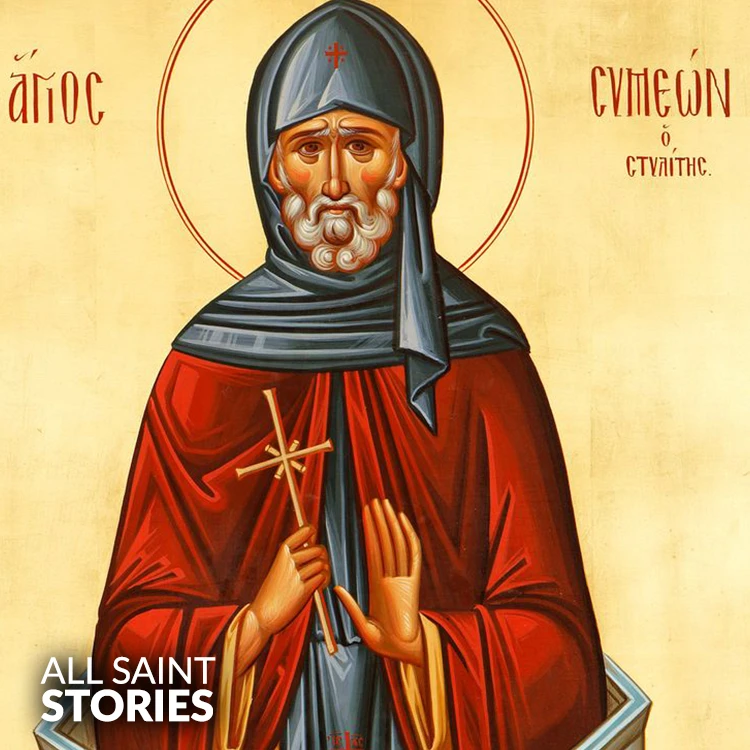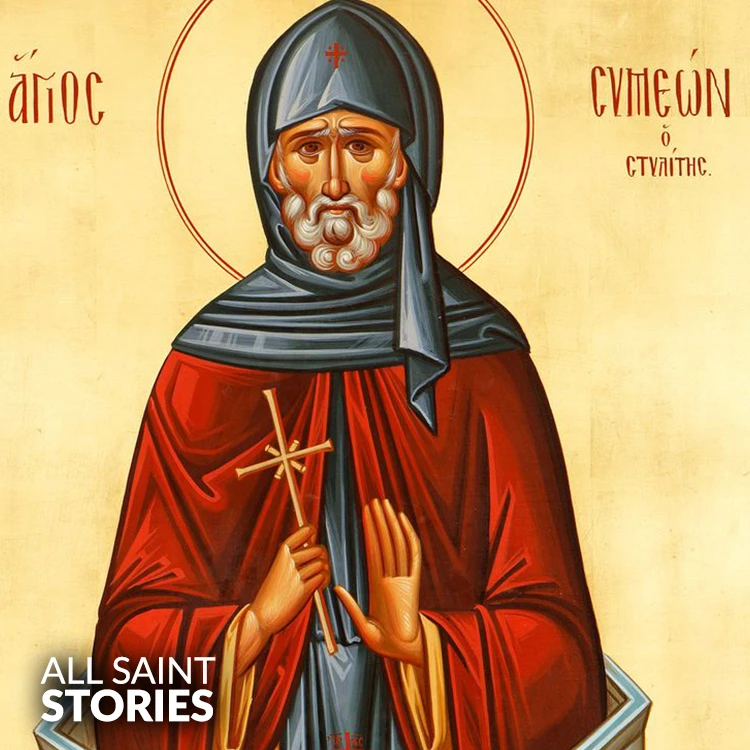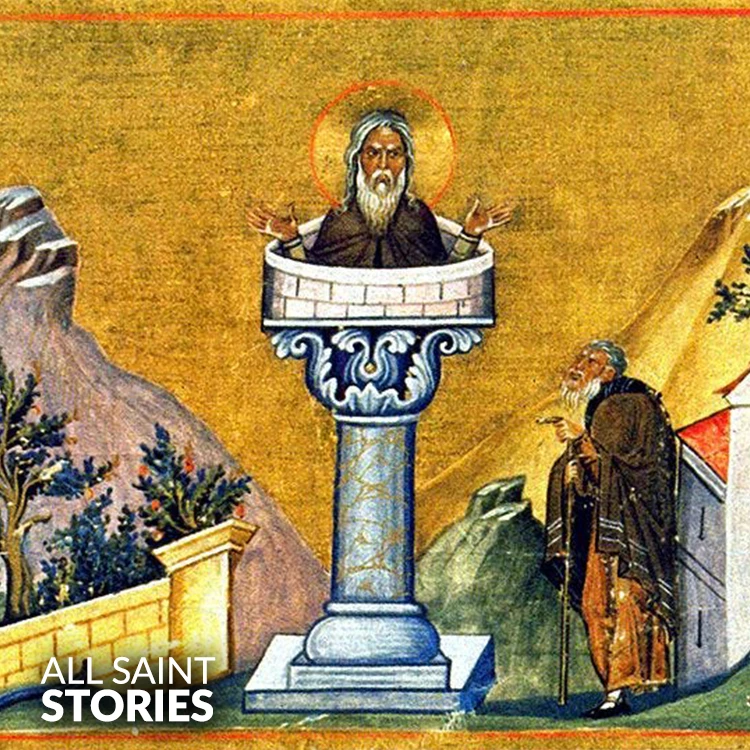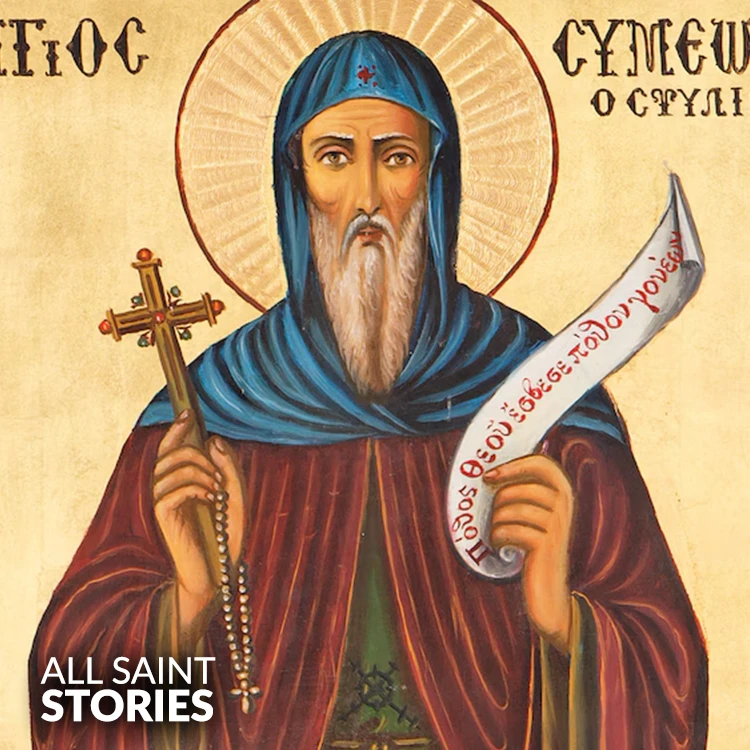"Saint Simon Stylites, faithful servant of God, who endured great trials in your pursuit of holiness, intercede for us. Help us to remain steadfast in faith, to find strength in times of suffering, and to live with patience and humility. Guide us in our journey toward the Lord, and may your example inspire us to grow closer to Him. Amen."
ST. SIMEON STYLITES
ST. SIMEON STYLITES

Saint Simeon Stylites was a Christian ascetic who is most famous for living atop a pillar for 37 years in the desert of Syria. His extreme dedication to prayer, self-discipline, and rejection of worldly distractions made him a renowned figure in early Christian monasticism. Simeon inspired many others to adopt a similar ascetic lifestyle, becoming a symbol of spiritual devotion and renunciation.
Saint Simeon Stylites was born around 390 AD in the region that is now modern-day Turkey. He grew up in a Christian family and showed an early inclination toward monastic life. After some time spent as a hermit, he moved into the Syrian desert to live in complete isolation. Around 423 AD, Simeon took the extreme step of living on top of a pillar, seeking a higher form of asceticism and devotion to God. Initially, the pillar was about 6 feet tall, but over the years, he moved to much taller structures, with the final pillar reaching a height of about 60 feet.
Simeon’s pillar life began as a form of retreat from the distractions and temptations of the world. By living atop the pillar, he sought to purify his body and soul, spending his time in prayer, fasting, and deep contemplation. Despite his isolation, Simeon became a beacon of spiritual guidance for many. People came from far and wide to seek his advice, blessings, and spiritual counsel. This solitary asceticism, which was incredibly demanding both physically and mentally, became a model for others in the monastic tradition.
His pillar became a site of pilgrimage, and over time, many other ascetics followed his example and took to living atop pillars as a form of extreme asceticism, known as the Stylite tradition. Simeon’s renown spread throughout the Christian world, and he became one of the most famous figures in early Christian monasticism. His ascetic practices represented the ideal of devotion to God above all else and the rejection of worldly pleasures.
Simeon lived atop his pillar for 37 years, enduring harsh weather conditions, illnesses, and other hardships. Despite these challenges, he remained steadfast in his commitment to his spiritual journey. During this time, he became a symbol of holiness, and his way of life was respected by both ordinary people and church leaders. His influence was so profound that even bishops and emperors sought his wisdom. Simeon’s example inspired many to pursue a life of greater devotion and spiritual discipline, and he is considered one of the key figures who helped shape the early Christian monastic tradition.
He passed away on September 2, 459 AD. After his death, his tomb became a place of veneration, and his followers continued to uphold his teachings and spiritual example. Though there are no specific records of his canonization, his widespread veneration throughout the Christian world led to his recognition as a saint. Saint Simeon Stylites remains a powerful example of the dedication and extreme forms of devotion that defined early Christian monasticism, inspiring countless individuals to dedicate themselves to a life of prayer and asceticism.
Video Not Found
The information on this website is compiled from various trusted sources. While we aim for accuracy, some details may be incomplete or contain discrepancies.
If you notice any errors or have additional information about this saint, please use the form on the left to share your suggestions. Your input helps us improve and maintain reliable content for everyone.
All submissions are reviewed carefully, and your personal details will remain confidential. Thank you for contributing to the accuracy and value of this resource.
Credits & Acknowledgments
- Anudina Visudhar (Malayalam) – Life of Saints for Everyday
by Msgr. Thomas Moothedan, M.A., D.D. - Saint Companions for Each Day
by A. J. M. Mausolfe & J. K. Mausolfe - US Catholic (Faith in Real Life) – Informational articles
- Wikipedia – General reference content and images
- Anastpaul.com – Saint images and reflections
- Pravachaka Sabdam (Malayalam) – Saint-related content and insights
We sincerely thank these authors and platforms for their valuable contributions. If we have unintentionally missed any attribution, please notify us, and we will make the correction promptly.
If you have any suggestion about ST. SIMEON STYLITES
Your suggestion will help improve the information about this saint. Your details will not be disclosed anywhere.
© 2025 Copyright @ www.allsaintstories.com







 English
English
 Italian
Italian
 French
French
 Spanish
Spanish
 Malayalam
Malayalam
 Russian
Russian
 Korean
Korean
 Sinhala
Sinhala
 Japanese
Japanese
 Arabic
Arabic
 Portuguese
Portuguese
 Bantu
Bantu
 Greek
Greek
 German
German
 Dutch
Dutch
 Filipino
Filipino